What To Do With Wet Insulation?
If you’ve had a leaking roof or some sort of water intrusion in your home, you may find yourself dealing with the rather unpleasant task of having to address wet insulation. This is a pressing issue that should not be ignored. Wet insulation can not only compromise the thermal efficiency of your home but also pose serious health risks due to mould and mildew.
How to identify wet insulation
Often, homeowners might first notice something amiss when they see dampness or water spots appearing on their walls or ceilings. These spots could start off as small discolourations but could grow over time, indicating that water is accumulating in the area. It’s vital to investigate these spots immediately. Their presence often suggests that insulation in the wall or attic may be affected.
Another telltale sign is an unusual musty smell that permeates the area. While our first instinct might be to dismiss it or cover it up with air fresheners, a musty smell can be a clear indicator of underlying moisture problems. Moisture trapped in insulation provides an ideal breeding ground for mould and mildew, which could be the source of the odour. Ignoring this smell can lead to more extensive damage over time and could also pose health risks.
Physical deformities in the wallboard can also provide crucial clues. If you observe swelling, sagging, or warping in your walls or ceilings, this could very well signify that the insulation behind them has absorbed a significant amount of water. In this case, it’s essential to act quickly and assess the insulation to prevent further structural damage and health risks associated with mould and mildew.
Last but not least, visible mould or mildew on the walls, ceilings, or even on exposed insulation in your attic should set off immediate alarm bells. Mould and mildew not only deteriorate the insulating material but also present serious health hazards, especially for those with allergies or respiratory conditions.
Types of insulation and their water-repellence
Mineral wool, Expanded Polystyrene (EPS), and Kingspan K5 are all types of insulation materials that are known for their water-resistant or hydrophobic properties to some extent. However, it’s important to understand that “water-resistant” does not necessarily mean “waterproof”. Each of these materials has its own limitations when it comes to moisture exposure.
Mineral Wool
Mineral wool is often considered to be water-repellent rather than waterproof. It does not readily absorb water and will wick moisture away. However, if it is exposed to a large amount of water for an extended period, it may become saturated and lose its insulative properties. Once it becomes wet, mineral wool can be difficult to dry out completely, potentially leading to mould and mildew issues.
Expanded Polystyrene (EPS)
EPS is more water-resistant than mineral wool and is often used in applications where moisture is a concern. However, if it is exposed to water for an extended period, it can absorb some moisture, leading to a reduction in its thermal performance. It’s worth noting that while EPS may absorb less water than other types of insulation, it’s still not entirely waterproof.
Kingspan K5
Kingspan K5 is a type of phenolic foam board that has good water resistance due to its closed-cell structure. However, it’s not completely impervious to water. Prolonged exposure to moisture can cause the material to degrade over time, reducing its effectiveness as an insulator.
-
Rockwool External Wall Dual Density Slab
Rated 5.00 out of 5From £26.24 Incl. VATFrom £21.87 Excl. VAT -
EPS Insulation (1 board = 0.72m²)
Rated 5.00 out of 5From £141.9 Incl. VATFrom £2.39 Incl. VATFrom £1.99 Excl. VAT -
Kingspan Kooltherm K5 External Wall Board (0.72m²)
Rated 4.67 out of 5From £11.99 Incl. VATFrom £9.99 Excl. VAT
General guidelines
- Installation: Ensure that these materials are correctly installed with proper sealing to minimise the risk of water intrusion.
- Protective layers: Using additional water-resistant or waterproof layers in the construction can further protect these materials from getting wet.
- Inspection: Regular inspections are advised to check for any signs of water damage, especially after severe weather conditions.
Assess the damage
Once you’ve identified that you’re dealing with wet insulation, it’s essential to evaluate the extent of the damage. To do this, you may need to access hard-to-reach areas like attics, crawl spaces, or even inside the walls. Before beginning your assessment, make sure you’re properly equipped with the necessary safety gear. Masks help to avoid inhaling harmful substances like mould spores, gloves to protect your hands, and eye protection for additional safety.
Your objective during this assessment is not just to gauge how much of the insulation is wet but also to check the surrounding materials for damage. This could mean looking for warped wood, corroded pipes, or compromised electrical wiring, as these could have been affected by the moisture as well. In the case of mineral wool, which can hold a large amount of water, you may also find that the weight of the wet insulation has caused sagging or even collapse in parts of your ceiling or walls.
A moisture meter can also be a useful tool to quantitatively measure the level of moisture in different materials. This would offer a more precise idea of the extent of the problem.
Determine the cause
Figuring out the root cause of the moisture issue is absolutely crucial, not only to address the current problem but also to prevent similar issues in the future. Water can infiltrate your home in various ways. For instance, a leaking roof would primarily affect the insulation in your attic, while bursts or leaking pipes could lead to wet insulation in your walls or floors.
In some cases, the problem may be more insidious, such as poor ventilation leading to condensation within wall cavities, thereby wetting the insulation over time. Sometimes, it could be a faulty moisture barrier or improper installation of the insulation itself that has led to the issue. Extreme weather events like floods could necessitate a broader scope of inspection and repair.
A detailed inspection of the exterior of the home can also be instructive. Look for damaged roofing materials, blocked or broken gutters, and cracks in external walls. These could be potential avenues for water ingress. Identifying the cause may sometimes require the expertise of professionals.
Determining the cause is not just a matter of fixing the immediate problem but should be seen as a proactive step in preventing future incidents. Once you’ve pinpointed the issue, corrective measures must be taken promptly to mitigate it. This can include roof repair, plumbing fixes, or improving home ventilation.
Removing the wet insulation
- Isolate the area: The first step is to isolate the affected area. This prevents the spread of mould spores or other contaminants. This can be achieved by hanging heavy-duty plastic sheets around the area.
- Removal process: When dealing with smaller affected areas, you might be tempted to just remove the visibly wet sections. However, water can spread quickly through insulation material. Therefore, it’s often advisable to remove a slightly larger area to ensure all wet material is taken out. Use a standard utility knife to carefully cut out the insulation without compressing it.
- Bagging and disposal: Place the wet insulation material in heavy-duty rubbish bags. Seal the bags tightly. Also, consult local waste disposal guidelines to ensure you’re disposing of the material in a compliant manner.
Drying the area
- Ventilation: Open up windows and use fans to bring fresh air into the area, which aids in the drying process.
- Dehumidifiers: For a quicker and more thorough drying, consider using a dehumidifier. This is particularly useful in areas like attics and basements where natural ventilation might be limited.
- Inspect the structure: While the area is exposed, check for other damages, such as warped wood or corroded wiring.
- Small areas: If only a small area is affected and the insulation is minimally wet, some types of insulation like mineral wool can sometimes dry out on their own without mould growth, especially if the cause of the wetness is promptly resolved. However, this is a bit of a gamble and generally not advisable due to the potential for hidden mould growth.
Replacing the wet insulation
- Material selection: If you found that the existing insulation material was inadequate or contributed to the moisture problem, consider switching to a more water-resistant material.
- Install moisture barriers: Before installing new insulation, make sure to install or replace moisture barriers like vapour barriers or vapour retarders as needed. This step is crucial to prevent future moisture problems.
- Small areas: If only a small area was affected, you could perform a “patch job”. Simply cut a piece of new insulation to fit the exact area where the old insulation was removed. However, ensure that the new insulation is tightly fitted against the existing material to avoid thermal bridges. Cold bridges compromise the insulation’s effectiveness.
- Professional installation: While DIY is an option, insulation is tricky to install correctly. Mistakes can lead to gaps, compression, or other issues that compromise its effectiveness. Professional installation can often offer a more secure, and long-lasting solution.
Storage of insulation on site
Whilst mineral wool, EPS, and Kingspan K5 all have varying degrees of water-repellence, proper storage on-site is still essential. Much like your basecoat and adhesive bags, insulation boards should be protected from the elements as best as possible. Most insulation boards come in packs that are shrink-wrapped. However, this does not constitute sufficient protection for the most part. Therefore, internal storage or temporary sheltering is advisable.
Facebook
Twitter
LinkedIn
Your cart
Trade Account Login

We use cookies on our website to give you the most relevant experience by remembering your preferences and repeat visits. By clicking “Accept All”, you consent to the use of ALL the cookies. However, you may visit "Cookie Settings" to provide personalised consent.
Manage consent
Privacy Overview
This website uses cookies to improve your experience while you navigate through the website. Out of these, the cookies that are categorized as necessary are stored on your browser as they are essential for the working of basic functionalities of the website. We also use third-party cookies that help us analyze and understand how you use this website. These cookies will be stored in your browser only with your consent. You also have the option to opt-out of these cookies. But opting out of some of these cookies may affect your browsing experience.
Necessary cookies are absolutely essential for the website to function properly. These cookies ensure basic functionalities and security features of the website, anonymously.
| Cookie | Duration | Description |
|---|---|---|
| __stripe_mid | 1 year | This cookie is set by Stripe payment gateway. This cookie is used to enable payment on the website without storing any patment information on a server. |
| __stripe_sid | 30 minutes | This cookie is set by Stripe payment gateway. This cookie is used to enable payment on the website without storing any patment information on a server. |
| _GRECAPTCHA | 5 months 27 days | This cookie is set by the Google recaptcha service to identify bots to protect the website against malicious spam attacks. |
| apbct_cookies_test | session | CleanTalk sets this cookie to prevent spam on comments and forms and act as a complete anti-spam solution and firewall for the site. |
| apbct_page_hits | session | CleanTalk sets this cookie to prevent spam on comments and forms and act as a complete anti-spam solution and firewall for the site. |
| apbct_prev_referer | session | Functional cookie placed by CleanTalk Spam Protect to store referring IDs and prevent unauthorized spam from being sent from the website. |
| apbct_site_landing_ts | session | CleanTalk sets this cookie to prevent spam on comments and forms and act as a complete anti-spam solution and firewall for the site. |
| apbct_site_referer | 3 days | This cookie is placed by CleanTalk Spam Protect to prevent spam and to store the referrer page address which led the user to the website. |
| apbct_timestamp | session | CleanTalk sets this cookie to prevent spam on comments and forms and act as a complete anti-spam solution and firewall for the site. |
| apbct_urls | 3 days | This cookie is placed by CleanTalk Spam Protect to prevent spam and to store the addresses (urls) visited on the website. |
| AWSALBCORS | 7 days | This cookie is managed by Amazon Web Services and is used for load balancing. |
| cookielawinfo-checkbox-advertisement | 1 year | Set by the GDPR Cookie Consent plugin, this cookie is used to record the user consent for the cookies in the "Advertisement" category . |
| cookielawinfo-checkbox-analytics | 11 months | This cookie is set by GDPR Cookie Consent plugin. The cookie is used to store the user consent for the cookies in the category "Analytics". |
| cookielawinfo-checkbox-functional | 11 months | The cookie is set by GDPR cookie consent to record the user consent for the cookies in the category "Functional". |
| cookielawinfo-checkbox-necessary | 11 months | This cookie is set by GDPR Cookie Consent plugin. The cookies is used to store the user consent for the cookies in the category "Necessary". |
| cookielawinfo-checkbox-others | 11 months | This cookie is set by GDPR Cookie Consent plugin. The cookie is used to store the user consent for the cookies in the category "Other. |
| cookielawinfo-checkbox-performance | 11 months | This cookie is set by GDPR Cookie Consent plugin. The cookie is used to store the user consent for the cookies in the category "Performance". |
| ct_checkjs | session | CleanTalk–Used to prevent spam on our comments and forms and acts as a complete anti-spam solution and firewall for this site. |
| ct_fkp_timestamp | session | CleanTalk sets this cookie to prevent spam on the site's comments/forms, and to act as a complete anti-spam solution and firewall for the site. |
| ct_pointer_data | session | CleanTalk sets this cookie to prevent spam on the site's comments/forms, and to act as a complete anti-spam solution and firewall for the site. |
| ct_ps_timestamp | session | CleanTalk sets this cookie to prevent spam on the site's comments/forms, and to act as a complete anti-spam solution and firewall for the site. |
| ct_sfw_pass_key | 1 month | CleanTalk sets this cookie to prevent spam on comments and forms and act as a complete anti-spam solution and firewall for the site. |
| ct_timezone | session | CleanTalk–Used to prevent spam on our comments and forms and acts as a complete anti-spam solution and firewall for this site. |
| elementor | never | This cookie is used by the website's WordPress theme. It allows the website owner to implement or change the website's content in real-time. |
| viewed_cookie_policy | 11 months | The cookie is set by the GDPR Cookie Consent plugin and is used to store whether or not user has consented to the use of cookies. It does not store any personal data. |
Functional cookies help to perform certain functionalities like sharing the content of the website on social media platforms, collect feedbacks, and other third-party features.
| Cookie | Duration | Description |
|---|---|---|
| __zlcmid | 1 year | This cookie is used by Zendesk live chat and is used to store the live chat ID. |
| bcookie | 2 years | LinkedIn sets this cookie from LinkedIn share buttons and ad tags to recognize browser ID. |
| bscookie | 2 years | LinkedIn sets this cookie to store performed actions on the website. |
| lang | session | LinkedIn sets this cookie to remember a user's language setting. |
| lidc | 1 day | LinkedIn sets the lidc cookie to facilitate data center selection. |
| UserMatchHistory | 1 month | LinkedIn sets this cookie for LinkedIn Ads ID syncing. |
Performance cookies are used to understand and analyze the key performance indexes of the website which helps in delivering a better user experience for the visitors.
| Cookie | Duration | Description |
|---|---|---|
| __utma | 2 years | This cookie is set by Google Analytics and is used to distinguish users and sessions. The cookie is created when the JavaScript library executes and there are no existing __utma cookies. The cookie is updated every time data is sent to Google Analytics. |
| __utmb | 30 minutes | Google Analytics sets this cookie, to determine new sessions/visits. __utmb cookie is created when the JavaScript library executes and there are no existing __utma cookies. It is updated every time data is sent to Google Analytics. |
| __utmc | session | The cookie is set by Google Analytics and is deleted when the user closes the browser. It is used to enable interoperability with urchin.js, which is an older version of Google Analytics and is used in conjunction with the __utmb cookie to determine new sessions/visits. |
| __utmt | 10 minutes | Google Analytics sets this cookie to inhibit request rate. |
| __utmv | 2 years | The __utmv cookie is set on the user's device, to enable Google Analytics to classify the visitor. |
| __utmz | 6 months | Google Analytics sets this cookie to store the traffic source or campaign by which the visitor reached the site. |
| sib_cuid | 6 months | Purechat uses this cookie to send data to purechat.com, to connect visitors to the reservation team and track visitors to stay on portal. |
| SRM_B | 1 year 24 days | Used by Microsoft Advertising as a unique ID for visitors. |
Analytical cookies are used to understand how visitors interact with the website. These cookies help provide information on metrics the number of visitors, bounce rate, traffic source, etc.
| Cookie | Duration | Description |
|---|---|---|
| _ga | 2 years | The _ga cookie, installed by Google Analytics, calculates visitor, session and campaign data and also keeps track of site usage for the site's analytics report. The cookie stores information anonymously and assigns a randomly generated number to recognize unique visitors. |
| _gat_gtag_UA_61069204_2 | 1 minute | Set by Google to distinguish users. |
| _gat_UA-61069204-2 | 1 minute | A variation of the _gat cookie set by Google Analytics and Google Tag Manager to allow website owners to track visitor behaviour and measure site performance. The pattern element in the name contains the unique identity number of the account or website it relates to. |
| _gcl_au | 3 months | Provided by Google Tag Manager to experiment advertisement efficiency of websites using their services. |
| _gid | 1 day | Installed by Google Analytics, _gid cookie stores information on how visitors use a website, while also creating an analytics report of the website's performance. Some of the data that are collected include the number of visitors, their source, and the pages they visit anonymously. |
| _uetsid | 1 day | This cookies are used to collect analytical information about how visitors use the website. This information is used to compile report and improve site. |
| CONSENT | 2 years | YouTube sets this cookie via embedded youtube-videos and registers anonymous statistical data. |
Advertisement cookies are used to provide visitors with relevant ads and marketing campaigns. These cookies track visitors across websites and collect information to provide customized ads.
| Cookie | Duration | Description |
|---|---|---|
| _fbp | 3 months | This cookie is set by Facebook to display advertisements when either on Facebook or on a digital platform powered by Facebook advertising, after visiting the website. |
| ANONCHK | 10 minutes | The ANONCHK cookie, set by Bing, is used to store a user's session ID and also verify the clicks from ads on the Bing search engine. The cookie helps in reporting and personalization as well. |
| fr | 3 months | Facebook sets this cookie to show relevant advertisements to users by tracking user behaviour across the web, on sites that have Facebook pixel or Facebook social plugin. |
| MUID | 1 year 24 days | Bing sets this cookie to recognize unique web browsers visiting Microsoft sites. This cookie is used for advertising, site analytics, and other operations. |
| NID | 6 months | NID cookie, set by Google, is used for advertising purposes; to limit the number of times the user sees an ad, to mute unwanted ads, and to measure the effectiveness of ads. |
| test_cookie | 15 minutes | The test_cookie is set by doubleclick.net and is used to determine if the user's browser supports cookies. |
| uuid | 6 months | MediaMath sets this cookie to avoid the same ads from being shown repeatedly and for relevant advertising. |
| VISITOR_INFO1_LIVE | 5 months 27 days | A cookie set by YouTube to measure bandwidth that determines whether the user gets the new or old player interface. |
| YSC | session | YSC cookie is set by Youtube and is used to track the views of embedded videos on Youtube pages. |
| yt-remote-connected-devices | never | YouTube sets this cookie to store the video preferences of the user using embedded YouTube video. |
| yt-remote-device-id | never | YouTube sets this cookie to store the video preferences of the user using embedded YouTube video. |
| yt.innertube::nextId | never | This cookie, set by YouTube, registers a unique ID to store data on what videos from YouTube the user has seen. |
| yt.innertube::requests | never | This cookie, set by YouTube, registers a unique ID to store data on what videos from YouTube the user has seen. |
Other uncategorized cookies are those that are being analyzed and have not been classified into a category as yet.
| Cookie | Duration | Description |
|---|---|---|
| _clck | 1 year | No description |
| _clsk | 1 day | No description |
| _uetvid | 1 year 24 days | No description available. |
| AnalyticsSyncHistory | 1 month | No description |
| apbct_pixel_url | session | No description |
| apbct_visible_fields_0 | session | No description |
| apbct_visible_fields_1 | session | No description |
| apbct_visible_fields_10 | session | No description |
| apbct_visible_fields_2 | session | No description |
| apbct_visible_fields_3 | session | No description |
| apbct_visible_fields_4 | session | No description |
| apbct_visible_fields_5 | session | No description |
| apbct_visible_fields_6 | session | No description |
| apbct_visible_fields_7 | session | No description |
| apbct_visible_fields_8 | session | No description |
| apbct_visible_fields_9 | session | No description |
| ct_checked_emails | session | No description |
| ct_has_scrolled | session | No description |
| ct_mouse_moved | session | No description |
| ct_screen_info | session | No description |
| ictf_master | never | No description available. |
| li_gc | 2 years | No description |
| m | 2 years | No description available. |
| SM | session | No description available. |
| testinfinitycookie | session | No description |
| woocommerce_show_tax | 7 days | No description available. |
| wp_woocommerce_session_c5ac76b408021294cb56bcc27eddf8a1 | 2 days | No description |


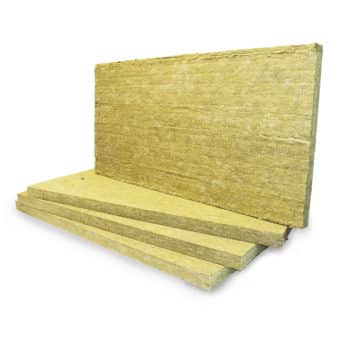
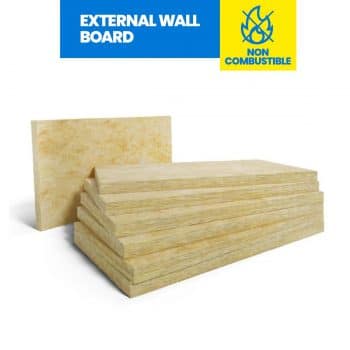
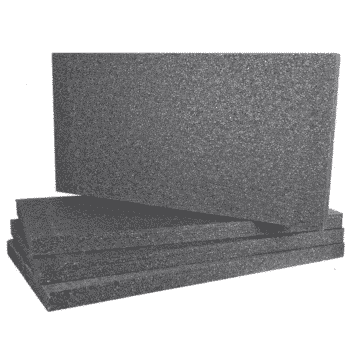

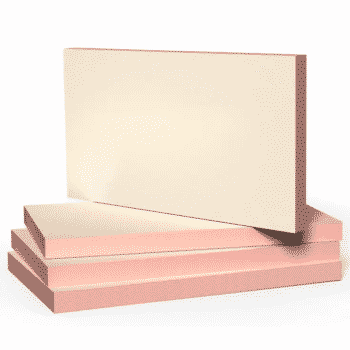
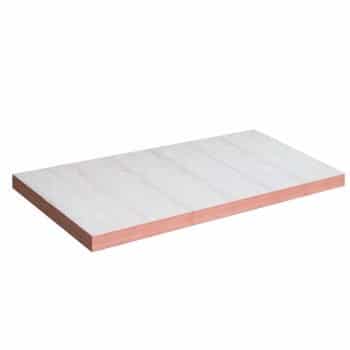
8 thoughts on “What To Do With Wet Insulation?”
Can the way the insulation is stored be a cause of water damage? I’m about to have some delivered and worried with the rain at the moment.
Hi Wendy, that can certainly cause some water damage. If you don’t store your insulation internally or elevated above the ground, it can be affected by any rain that accumulates and pools.
What do I do if it does get wet?
EPS won’t get wet, but something like Mineral Wool will need to be allowed to dry out. The timeframe for that naturally depends on the conditions but covering it to prevent further saturation is crucial.
we’ve used K5 but want to replace the wet area with eps. is this ok?
Hi Bruce, the problem you may encounter is that you’ll need a thicker board to achieve the same U-value as the K5 achieves. If you use the same thickness of EPS as K5 to keep the thickness uniform, you’ll create an area that’s not as well insulated (cold bridge). So ideally, you’ll need to replace with K5 and try to keep the dry throughout the process. If you’re unsure, drop us an email on [email protected] and we’ll put you in touch with our Technical Team.
is there a good way to dry it on site?
Hi Henry, something like indirect fired heaters or electric fan heaters work. These don’t introduce any moisture into the air.